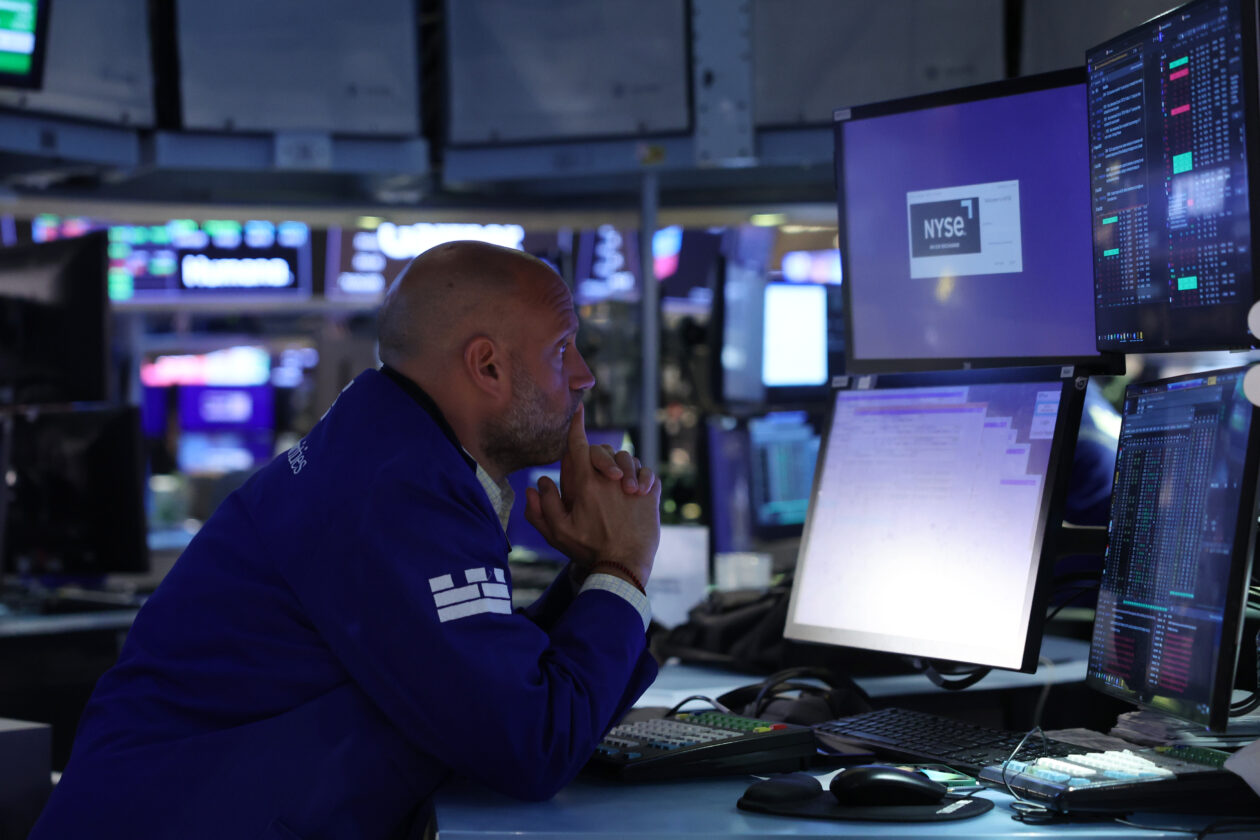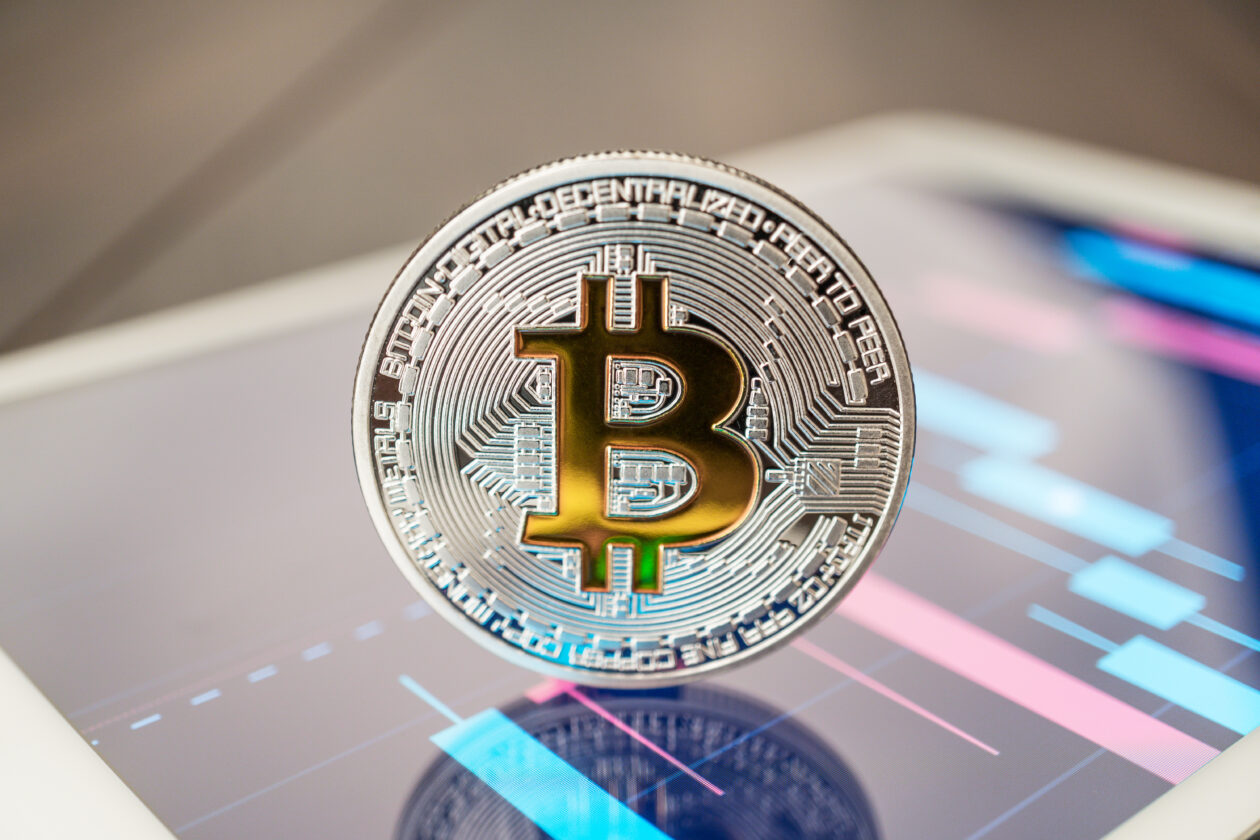Bitcoin traded flat on Tuesday afternoon in Asia to stay range bound above the US$29,000 support level. Ether dipped, while most other top 10 non-stablecoin cryptocurrencies traded flat to lower, with Solana’s SOL the only one strengthening. The Forkast 500 NFT index moved up after the NFT market saw the largest weekly total transactions since February 2022. Most Asian stock markets dropped after China unexpectedly lowered its interest rate on Tuesday morning and released weaker-than-expected economic data. U.S. stock futures also declined and European bourses traded lower.
Bitcoin, Ether flat; Solana rises
Bitcoin remained unchanged in the last 24 hours to trade at US$29,380.78 as of 5 p.m. in Hong Kong, and logged a weekly gain of 0.82%, according to CoinMarketCap data. The world’s leading cryptocurrency briefly reached a high of US$29,660.25 early Tuesday morning.
Bitcoin prices are below its 50-day moving average of US$29,887, with its 30-day realized volatility falling to 17%, the lowest since November 2018, which both indicate bearishness in the token, Markus Thielen, head of research & strategy at digital asset service platform Matrixport, said in an emailed note on Tuesday.
Meanwhile, the “Greed & Fear Index prints 54% for Bitcoin, above the 21-day moving average which signals that a rally could occur imminently,” added Thielen.
Bitcoin’s price has remained largely within at US$29,000-30,600 for the past seven weeks, causing frustration among investors seeking higher rewards. However, low volatility could prove to be a blessing in disguise, said Nigel Green, founder and chief executive officer of financial management group deVere, in an emailed statement.
“This newfound stability attracts institutional investors, who have been historically wary of entering the market due to its extreme price swings,” Green said.
“This stability is also a boon for businesses and consumers looking for a reliable store of value or medium of exchange,” he added.
Digital asset investment products saw an inflow of US$29 million in the week ending Aug. 11. That followed three consecutive weeks of outflows totalling around US$144 million, according to a Monday report by European alternative asset manager CoinShares. Bitcoin saw an inflow of US$27 million — roughly 93% of the total inflows.
The inflows to digital asset investment products are “likely due to the recent U.S. inflation data, which was slightly below expectations, signifying that a September rate hike is less likely,” CoinShares wrote in the report.
Ether dipped 0.33% to US$1,840.95 but added 0.71% for the past seven days. Other top 10 non-stablecoin cryptocurrencies all traded lower with the exception of Solana’s SOL, which moved up 1.39% to US$24.82 and gained 7.09% for the week.
Synthesis One, an artificial intelligence (AI) data crowdsourcing platform based on the Solana blockchain, launched its new train-to-earn application “Workspace by Synesis” on Monday.
The app allows users to train AIs as data providers while earning cryptocurrencies as rewards. This process, Synthesis One claims, will result in a “fully traceable and auditable” data supply chain.
Shiba Inu, which has recently replaced Polkadot as the 10th biggest non-stablecoin cryptocurrency by market cap, led the losers, falling 2.89% to US$0.00001028 while logging a weekly jump of 14.51%
The token received a boost from the incoming launch of Shibarium, a layer-2 network built by Shiba Inu developers whose launch date is yet to be unveiled.
Blockchain analytics platform Lookonchain noted Tuesday that bankrupt crypto lender Voyager Digital had been selling its assets including Shiba Inu, which could weaken the upward trend in the token.
The total crypto market capitalization dipped 0.18% in the past 24 hours to US$1.17 trillion, while trading volume edged up 7.75% to US$26.17 billion.
Weekly NFT transactions rise to year-high
The main Forkast 500 NFT index moved up 0.27% in the past 24 hours to 2,482.04 as of 17:50 p.m. in Hong Kong, and up 0.05% for the week. Forkast’s Ethereum, Polygon and Cardano NFT indexes also logged gains, while the index for Solana dropped.
Total NFT trading volume rose 28.04% in the past 24 hours to over US$17.71 million, according to data from CryptoSlam. Volumes on the Ethereum, Solana, Polygon, and Cardano blockchains all logged double-digit gains, while volumes on the Bitcoin blockchain shrank.
In the week ending Aug. 13, NFT sales topped US$101 million after sitting short of US$100 million for three consecutive weeks. NFT transactions for the week exceeded 2.8 million, a high since February 2022.
On the past week’s surge in NFT sales, Yehudah Petscher, NFT Strategist at Forkast Labs, said that he saw the emergence of low-priced collections as key to a sustained potential uptick in the market.
“We’re getting a glimpse of the future of NFTs. More affordable prices, higher volume, likely big brands and this is what we’re seeing in DraftKings, DMarket, Gods Unchained, and Sorare,” said Petscher.
Combined, Petscher noted, those three collections alone notched 872,185 transactions — nearly a third of the week’s total transactions.
“The question is, is this sustainable? I think it is, and that’s exactly why this will be the future. Traders haven’t really left NFT, they just ran out of liquidity since there’s no profits. But they can afford NFTs that are priced at just a few dollars,” Petscher added.
Among NFT collections, Ethereum-based DeGods saw the largest 24-hour sales volume, surging 255.38% to over US$2.92 million after the project launched its “Season 3” digital art collection on Sunday.
Ethereum-based Bored Ape Yacht Club, Mythos Chain-based DMarket, ImmutableX-based Gods Unchained and Polygon-based DraftKings took up the rest of the top five NFT collections in terms of 24-hour sales volume.
Adidas Originals, a subdivision of sports apparel corporation Adidas, will launch its first NFT auction on Aug. 22 in collaboration with crypto payment platform Moonpay.
The auction will feature 100 “product-linked” NFTs, each of which can be later redeemed for a pair of limited-edition sneakers in the real world as well as a digital replica.
Most Asia stock markets drop, U.S. equities down

U.S. stock futures slid as of 18:30 p.m. in Hong Kong following gains at the close of trading Monday, while the main stock indexes traded mixed. China’s Shanghai Composite, Hong Kong’s Hang Seng and South Korea’s Kospi all logged losses, while Japan’s Nikkei moved higher.The stock market took a blow after China’s central bank unexpectedly lowered the rate of its medium-term lending facility (MLF) by 15 basis points to 2.5% on Tuesday morning, only two months after the previous rate cut in June.
“The slightly earlier timing and a larger than expected 15 basis point rate cut of MLF show that Beijing feels the urgency to take more policy easing actions to stabilize expectations and growth,” Xiaojia Zhi, chief China economist at international banking group Credit Agricole, told Bloomberg, adding that China could see more monetary easing in the coming months.
“(The rate cut in China) is a positive but I suspect the support to the market from this will be subdued and short-lived,” Redmond Wong, a market strategist at Saxo Capital Markets Hong Kong, told Bloomberg in another Tuesday report. “Investors now are worried about credit events, not just from the ailing property sector.”
The decision was announced shortly before China’s National Bureau of Statistics reported disappointing economic data for July. That data included a rise in the urban unemployment rate, as well as decelerated and smaller-than-expected growth in retail sales and industrial production, according to the Wall Street Journal.
U.S. global investment bank Goldman Sachs said in a Sunday note it expected the Federal Reserve to start cutting the interest rates in the second quarter of 2024 and keep the rates unchanged at its next meeting in September, Bloomberg reported on Monday.
“The cuts in our forecast are driven by this desire to normalize the funds rate from a restrictive level once inflation is closer to target,” wrote Goldman Sachs analysts in the Sunday note.
U.S. investors now await the release of retail sales data on Tuesday, followed by the U.S. Federal Reserve’s July meeting minutes on Wednesday, for further insight on the health of the U.S. economy and the Fed’s future monetary policies.
The Fed meets on Sep. 19 to make its next move on interest rates, which are now between 5.25% to 5.50%, the highest level since January 2001. Analysts at the CME FedWatch Tool predict a 88.5% chance there will be no interest rate hike in September.
Elsewhere, European bourses traded lower on Tuesday, with the benchmark STOXX 600 and Germany’s DAX 40 both dropping during afternoon hours in Asia.
Stocks in U.K. and Sweden spearheaded the drop in the European markets, as a strong wage increase in the U.K. and high inflation data in Sweden triggered fears of more interest rate hikes, according to Reuters on Tuesday.
(Updates with equities section.)





